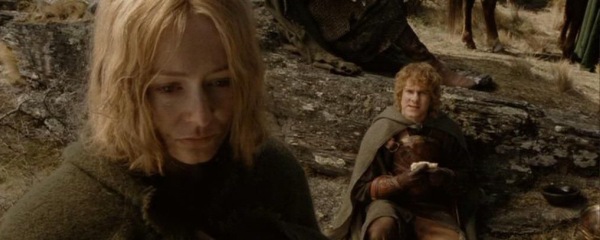The idea of the “fallen woman” has taken many shapes and forms throughout history. Serving as a reflective medium of “societal norms” of virtue and femininity; leaving one to question their own worth in resistance. Watching women meet untimely ends, falling out of the light of God, and falling to the knees of their once strong-willed reservations about the world beyond their concealment. Originally serving as a cipher to hammer home the ideology of reliance that forced women into reclusive corners of self-repression.
However, as made clear by the narrative presented by Hannah W. Foster’s The Coquette, one can find the question just a tiny bit more daunting. Even with the timely restraint that befell Eliza in the written word and arguably, Foster herself in the world of her own society, one can see inklings of the future. The “radical” notions of falling out of step, if only to find a happiness and role in the world outside of the expected fates of child-bearing and husbandry– are not entirely dismissed. If anything, by giving Eliza voice, they are heightened, immortalized– forever to be analyzed by the likes of scholars and casual readers. The “stereotypical” tune is far from sung, giving a verse to the overwhelming sensation, that if the world hadn’t been hard-wired against her, Eliza would be thriving. Living and breathing her longing for compatriot love, vying for a chance to be welcomed. If society hadn’t suffered from such gated constructs, maybe this narrative wouldn’t have lived to see tragedy.
In this simple notion, Foster suggests that the “fallen woman” could have possibly been left standing. Preserving long enough to see majesties and experience, until her heart could finally settle. Removing chains from her branded fate as a “cautionary tale”, just long enough to see it morph into a “revolutionary” one.
Sparking a fire that awoke a new definition; one of reclaiming. One of rebirth.
One that didn’t end in death stifling her.

J.R.R. Tolkien’s most famous work, The Lord of The Rings, took to heart a message of “resistance.” It is so finely woven into its narrative that it drives the entire journey from its beginning to its end. The reception of the unlikely hero, the smallest proving to be the biggest, the tarnished being made of gold, and the fallen– given wings to fly.
Éowyn is primed for “conventionality” from her perceived inception. As a daughter of the House of Erol and a goddaughter to the King of Rohan, she was born to fall into every trope behind the “privileged.” Given the ability to live a life of leisure, to sit back while the Darkness threatened to overshadow all of Middle-earth– she persists. Breaking away from ball gowns and flattery, wanting nothing but to brandish a sword in combat. To fight for the Light that she believed in– instead of standing idly by. Her voice was one that longed to break out from her perceived “frailty” and renew hope to her people.
Laughed off by her countrymen, her grit was nothing but a “dream of fancy.” As a woman, but a noblewoman no less, how was she to lift the weapon to snuff out the flames of Mordor?
Tolkien even further plays upon her “disparity” at the hands of her ill-fated love for Aragorn, one who, yet kind– must dismiss her, for he could never love her in return. Heartbroken, beaten down, and stalled– all the stops are pulled in order to fully form all the “conventional” chains of her narrative… Only to break them in the roar of battle.

In hearing the dismissal of Merry, another perceived target of unworthiness by the armies of Rohan, Éowyn takes to her wits. Bravery and resistance proving more powerful than prejudice, she disguises herself among the barracks and bears Merry as her second rider. Pulling sword out of the scabbard and facing down the greatest evil her world has ever known. Thrusting herself into the front lines– the world isn’t for the few. It’s for all. It’s for men like the Riders of Rohan, Hobbits like Merry, but just as importantly, women like her. Coming to a head when her own “feminine temperament” finds her face to face with one of the enemy’s greatest forces, the Witch-king of Angmar, in an attempt to save her godfather from the impending flames, unconscious and facing death.
Crossing swords and laughed out by her uneducated enemy– that no man had ever slain him. Yet, in one stroke of his pen, Tolkien reimagined the narrative. Figuratively and literally tearing the mask off of Éowyn, to face her adversary head on… Declaring her worth outside of the bounds of men. Striking down the evil she so sought to help destroy and vanquishing the With-king forever. Rendering her battle– Won.
Forever re-writing the “fallen woman” narrative– giving it a new ending, a new life– in the “triumphant woman.”
